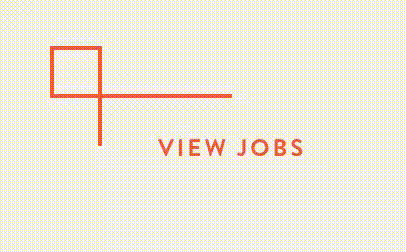By Talie Smith
November 17, 2025
Your website is often the most complete expression of your organization’s story. Sometimes a team will decide to take a huge swing in design and user experience to stand out with something cool, new, or flashy. After all, we know that it takes 15-30 seconds to make an impression on a visitor and, hopefully, encourage them to stay and engage. However, we often see this strategy taken a step too far, to the detriment of good user experience and design. And we wonder if it really helps in the long run.
A Philosophy: Subtlety Beats Showy
At Smith & Connors, we believe in subtle, well-tuned design choices and movement to communicate brand personality. To us, those flashy animations or aggressive transitions are the equivalent of waving your arms wildly and shouting. It can be disorienting and distracting to experience, and quickly feels old and dated as it’s so pronounced. People might notice and even reward you at first, but they don't necessarily want to stick around. The power is in the small design choices and micro-interactions that speak to the many facets of your personality and approach.
The meaning of the interaction may not even be consciously notable, but it can leave visitors with curiosity, confidence, and a little hit of joy.
These moments of interaction signal intentional decisions you’ve made to create an experience for your visitor. The way a button responds to your cursor. The smooth scroll that makes navigation feel effortless rather than jarring. The gentle fade when a modal appears. The subtle movement upward of the content as the page loads. These are crafted animations that carry momentum and energy through the experience. They're the design equivalent of body language. You’re looking to create trust, focus, and to be accessible, which become sophisticated signals that fundamentally shape how people feel about your brand.
Trust is built through confidence, consistency, and reliability. When you meet someone who's genuinely confident, they don't need to tell you. Their presence, their measured responses, the way they listen, it all communicates, without a word, that you can really trust them to be themselves. And when they keep acting that way, or on the web, when interactions behave predictably, when buttons respond the way users expect, when navigation feels intuitive, you're building confidence. Flashy effects can feel gimmicky, like you're trying too hard.
Focus comes from removing distractions. Every unnecessary animation is competing for your user's attention. In our work with complex organizations like Lawrence Berkeley National Laboratory and Stanford University, we know that users come to websites with a wide range of goals. The design should guide them toward those goals, not compete with them. Subtle momentum helps direct attention without demanding it.
Accessibility is non-negotiable. Subtle interactions are inherently more inclusive because they enhance without overwhelming.
What’s beautiful is that subtle interactions can reinforce your core brand attributes without requiring extra copy or explanation. A playful micro-interaction on a button tells users you're approachable. A smooth, measured transition signals sophistication. A thoughtful loading state shows respect for users' time and attention.
Subtle Design in Action: Real Examples
Let’s look at a few examples in practice, drawing from projects we've built.
Button States That Tell a Story
On our own website, we created a simple interaction for our call-to-action buttons. When you hover over one of our angled bracket buttons, the bracket slides and transforms into an arrow. In one variant, it blooms into a circle. In another, a circle appears and contracts slightly.

For the Oregon Community Foundation, we created a button state that closes the loop. It creates a little logo animation, but not in an obvious way.

Each one is designed to reflect a unique aspect of the brand personality and purpose through little moments of delight, giving visitors a reason to hover twice and consider how it makes them feel. One animation feels like an expansion of possibility; the other feels like a focusing of energy. They're deeply considered and they reinforce our brand without saying a word about it.
Color and Imagery Theming
For the Arizona Community Foundation, we created a system of themed color overlays with imagery that could be applied across different sections and campaigns.
These show different flora and fauna from across the state. We designed this interaction to reinforce the place-based nature of their work, and to emphasize the idea on their homepage that they work on behalf of all areas and communities of Arizona. It lends a rich visual texture to the experience. The effect is dynamic without being distracting, it creates visual interest and helps users understand where they are in the information architecture.
Custom Icons
As with many of our projects, we design a new direction for iconography that tells a story with an organization’s specific brand personality. For 3Degrees, we refined the direction of their existing set of icons and then their designer, James Neale, updated them to reflect new experience principles for their website. It's the difference between someone entering a room by kicking the door open versus opening it and walking in purposefully. Both get you into the room, but one feels a lot more intentional.
Principles for Creating Momentum
If you're thinking about how to bring more energy to your own site, here are some principles we follow:
Make It Purposeful
Every animation, every transition, every hover state should serve a purpose. Is it signaling hierarchy? Providing feedback? Guiding attention? If an interaction is purely decorative, question whether it's earning its place. The best micro-interactions do multiple jobs at once, they delight and inform.
Keep It Consistent
Develop a shared motion language across your components. If buttons ease in over 200ms with a specific easing curve, that should be consistent across the site. This consistency creates a cohesive experience that feels intentional rather than haphazard. It's like having a consistent voice in your writing and it builds recognition and trust.
Stay On-Brand
Your interactions should reflect your brand personality. A children's museum might use bouncy, playful animations. A law firm should probably opt for measured, precise transitions. An arts organization could push boundaries with more expressive movement. There's no universal "right" approach, there's only what's right for your brand and your audiences.
Prioritize Performance and Accessibility
This is where a lot of well-intentioned design goes wrong. Animations that drop frames, transitions that ignore reduced-motion preferences, effects that create layout shifts, these aren't just bad user experiences, they're exclusionary. Always test on different devices and connection speeds. Always respect user preferences. Always ensure your site remains usable with interactions disabled.
Performance and accessibility aren't constraints, they're guardrails that prevent you from making flashy bad choices.
The Power of Quiet Confidence
Here's what we've learned after years of building brands and websites for purpose-driven organizations: the most solid, memorable, and long-lasting digital experiences reveal themselves gradually, through dozens of small, considered choices that accumulate into something that feels coherent, intentional, and alive.
When you invest in subtle momentum and thoughtful micro-interactions, you're not just making the world a little easier to live in. You're communicating that you care about details, that you respect your users' experience, and that your brand has the confidence to let quality speak for itself.
